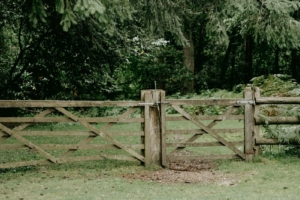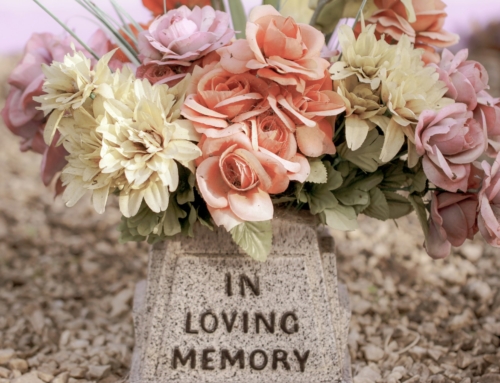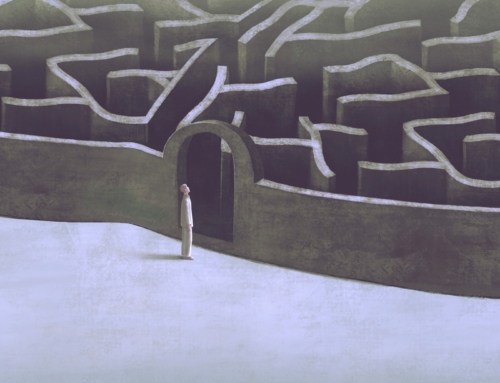People with an anxious attachment style often have a strong fear of abandonment. More than others, they crave support, appreciation, and attention. Their sensors are attuned to detect the slightest change in the dynamic of a relationship, and they kick into action when they sense something is off. They may become clingy, needy, and possessive if they sense any “coolness” or distance creeping into a relationship.
This amounts to having limited or non-existent boundaries. Boundaries are a way to practice self-care by prioritizing one’s own needs and wants. The person with an anxious attachment style tends not to have or maintain these boundaries, resulting in them feeling drained, resentful, and becoming a fractured version of themselves.
How does one learn to build boundaries with an anxious attachment style? It may take some practice, but it is possible.
Defining boundaries
A boundary is a line we make to surround and protect something valuable. The resources we need to protect are our time, energy, mental health, emotional wellness, spiritual state, bodily autonomy, and physical health. This is not always easy and there will be many times when we feel drained and depleted. But having healthy boundaries ensures stable emotional, spiritual, and mental health.
 In the context of relationships and even marriages, it is important to maintain your sense of self by preserving the things that make you who you are. These are the things that you value, even if your partner does not. Maybe you are someone who enjoys a specific hobby. By making time for this hobby, for your own enjoyment, you have effectively created a healthy boundary.
In the context of relationships and even marriages, it is important to maintain your sense of self by preserving the things that make you who you are. These are the things that you value, even if your partner does not. Maybe you are someone who enjoys a specific hobby. By making time for this hobby, for your own enjoyment, you have effectively created a healthy boundary.
You might want to involve your partner in it from time to time, but it won’t threaten the foundations of the relationship if you don’t. It is healthy for couples to balance separate pursuits and interests with combined ones.
The truth is that all of us need to work on boundaries constantly. Calibrating these boundaries is difficult because if they are too rigid and you are too protected behind them, that boundary becomes a wall. It will take a lot of effort for anyone to get over your wall, and you may find yourself stuck behind it, lacking resources and affection. A boundary that is too flexible will lead to excessive access to your peace of mind, your time, and your attention.
Boundaries and the anxious attachment style
If you have an anxious attachment style, you may find it difficult or impossible to establish and respect boundaries, both your own and other people’s. Why is this and where does it stem from?
 Your attachment style developed early in your childhood. In the case of insecure attachment styles, maybe your parents or primary caregivers, for whatever reason, were unpredictable with their care. You were left to draw your conclusions as to why you were being suddenly ignored, but your parents’ neglect communicated that you were not worthy of the affection or attention you craved.
Your attachment style developed early in your childhood. In the case of insecure attachment styles, maybe your parents or primary caregivers, for whatever reason, were unpredictable with their care. You were left to draw your conclusions as to why you were being suddenly ignored, but your parents’ neglect communicated that you were not worthy of the affection or attention you craved.
Insecure attachment often appears in partnership with low self-esteem. Adults with an anxious attachment style tend to hang their value and safety on the people with whom they are in a relationship.
A romantic partner or attentive friend might fill the gaps left by intermittent or conditional affection from childhood. In other words, you try to gain the value, affection, and security you missed out on as a child from your adult friends, partners, or even work colleagues and authority figures.
The distance
Boundaries often require a temporary distance between yourself and the things that threaten to steal your resources. For example, silencing notifications on your phone in the evening is a boundary that creates distance between your home life, and everything else.
Distance is a form of communication that says, “I am not available to you right now; you are not my priority”. This is the essence of a boundary, and it is also the stressor that triggers insecurity in people with an anxious attachment style.
 When you become “clingy” or possessive in a relationship, it is often a response to a boundary being set up somewhere in the relationship. The change that your highly attuned sensors detected might just be a temporary distance or silence, and you have perceived or interpreted this as rejection.
When you become “clingy” or possessive in a relationship, it is often a response to a boundary being set up somewhere in the relationship. The change that your highly attuned sensors detected might just be a temporary distance or silence, and you have perceived or interpreted this as rejection.
This is naturally upsetting and triggering for you. Your response will generally look like desperation to close the gap, a need for reassurance, or a compulsion to try and “fix” whatever is wrong.
If allowed to continue, this clingy or possessive behavior will suffocate a relationship, or turn it toxic. It takes effort to rewire your perception and change your behavior. Learning how to respond to others’ boundaries goes hand-in-hand with learning how to build your boundaries. And it is doing this that will help you migrate from an insecure attachment style to a healthy and secure one.
Two ways to build boundaries when you have an anxious attachment style
A pattern of behavior that developed over more than a decade will not change instantly or easily, so go easy on yourself from the start. Learning to build healthy boundaries takes time and practice, but it is maybe less complex than you fear. By examining your motives and making small efforts in your actions, you will be on the road to building healthy boundaries and developing secure attachments.
Identification
The first thing to do is to become aware of all the areas of your own life where you do not have boundaries. Consider questions like “How often do I get time to myself and do I enjoy it when I do?”, “How often am I available to those around me?”, “Do I miss out on something to be present for someone else?”, “Can I receive and not feel the need to reciprocate?” or “To what extent do I people-please?”.
Other areas you could consider are your relationship with food, substances, and finances. How often do you binge and how would you feel if you could not?
By considering these questions and your answers, you will begin to see some of the ways that you have been affected by not having sufficient boundaries. This might be alarming and uncomfortable, so it is important to go slowly and methodically. Doing this in the form of journaling or talking with a counselor or therapist could help you not feel overwhelmed.
You may not have even realized to what extent you have been neglecting yourself, or for how long. This is nothing to be ashamed of, but it also must not be ignored. You are worth the time and effort it takes to be connected to your purpose in life. If you can’t believe this then this is where the journey begins for you. Find someone you can trust and begin exploring your self-image.
Practicing restraint
 Building boundaries should not be a drastic process. Instead, it is the smallest repeated actions that amount to meaningful change. It might look like texting someone less, or not being the first to check in every time. You might stop dating for a month, or pledge to have one “alone day” a week. If you found that you were eating to quell anxiety, or drinking alcohol for comfort in a routine manner, it might be worth interrupting this process for a time.
Building boundaries should not be a drastic process. Instead, it is the smallest repeated actions that amount to meaningful change. It might look like texting someone less, or not being the first to check in every time. You might stop dating for a month, or pledge to have one “alone day” a week. If you found that you were eating to quell anxiety, or drinking alcohol for comfort in a routine manner, it might be worth interrupting this process for a time.
These are all small steps that you can take to prioritize your well-being and get back in touch with your wants and needs (or perhaps discover them for the first time). When every situation or every person demands more attention from you than you give to yourself, it is a clear sign that something needs to be interrupted and re-evaluated.
This “pulling back” interrupts your compulsions to fix, rescue, serve, and give to feel valuable. As a result of interrupting these compulsions, the process of reshaping your thought patterns begins.
When you constantly place others’ needs before your own, you are subconsciously reinforcing a belief that others matter more than yourself. Addressing your motives, instincts, responses, and compulsions is the start of building healthy boundaries. After that, the journey to building healthy attachment is made up of small steps in taking ownership of your own needs.
Getting help for an anxious attachment style
Addressing insecurity can be a long and confusing process, but building healthy boundaries will eventually help you develop a secure attachment style. You might find that your mental and emotional health improves notably as you begin making more space for your needs and interests.
We recommend working with a trained counselor as you begin tackling issues of insecure attachments and building boundaries. You will have someone to reflect and check in with as you progress, and this could make all the difference as you commit to growing in these areas. Please give our offices a call to schedule an appointment. There are counselors ready and available to see you when you feel ready.
“Old Wood Fence”, Courtesy of Annie Spratt, Unsplash.com, CC0 License; “Middle of the Road”, Courtesy of Ralph Katieb, Unsplash.com, CC0 License; “Holding Hands”, Courtesy of loilamtan, Pixabay.com, CC0 License; “Fishing Rig”, Courtesy of K_Malik, Pixabay.com, CC0 License











